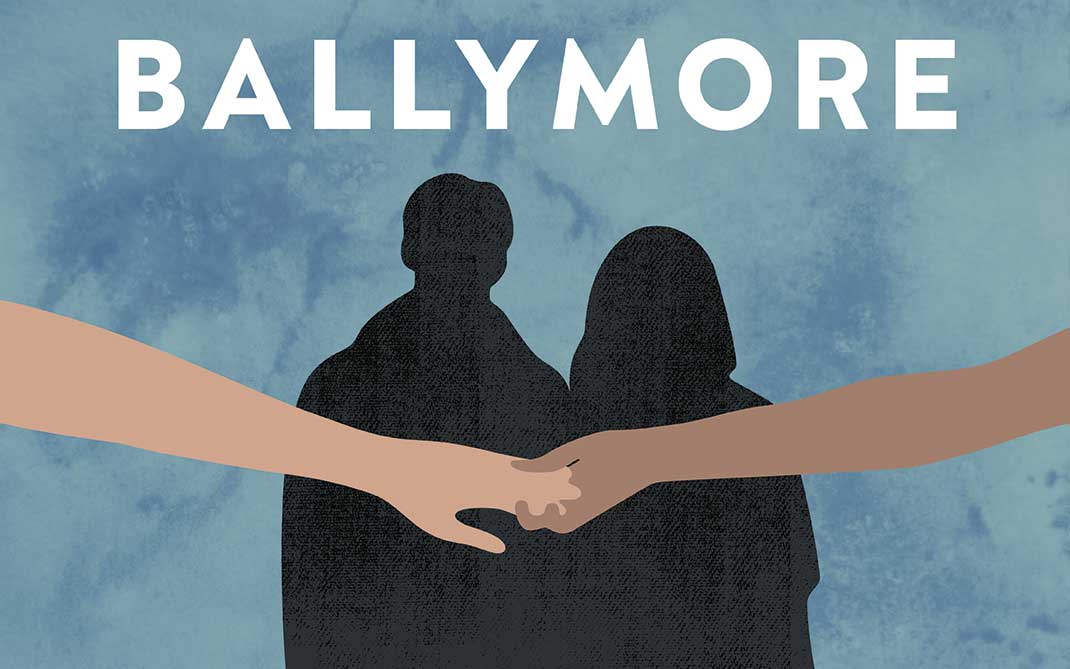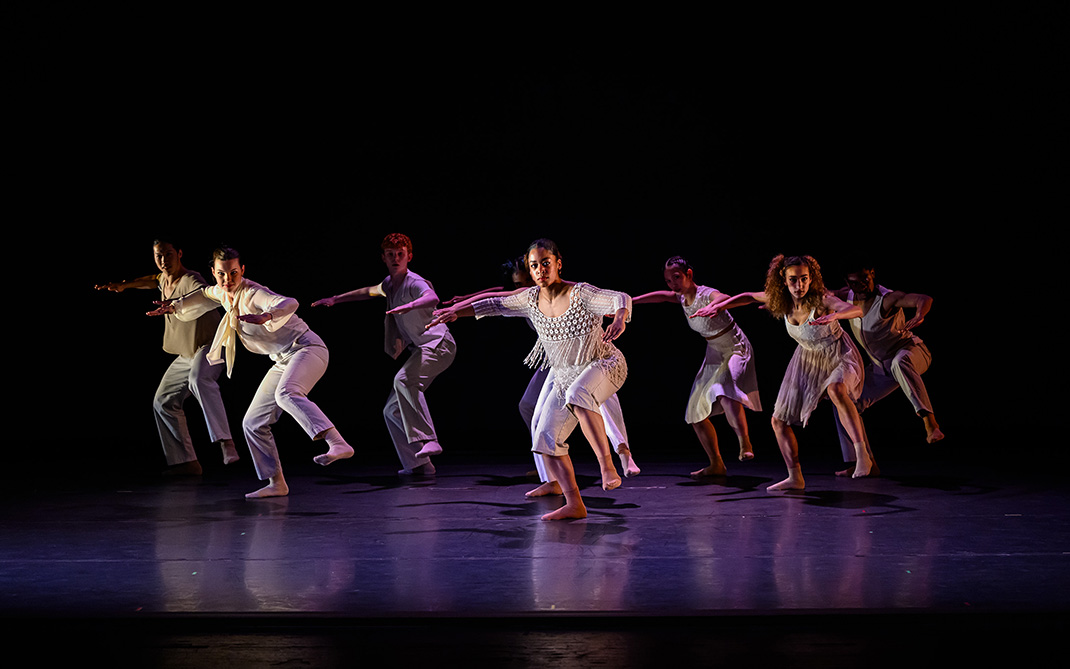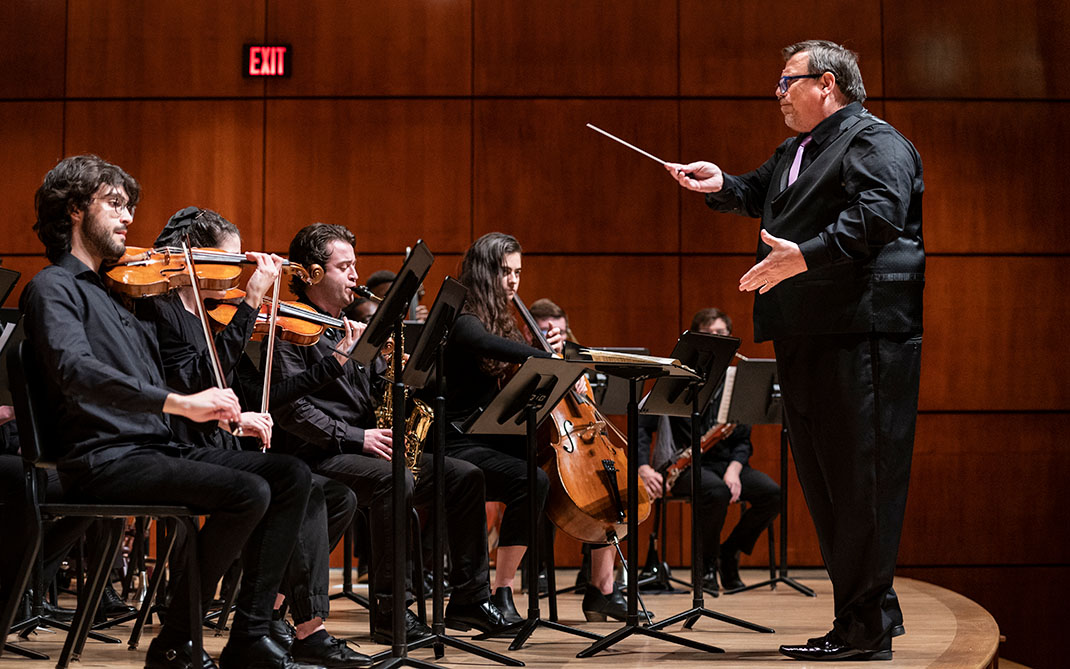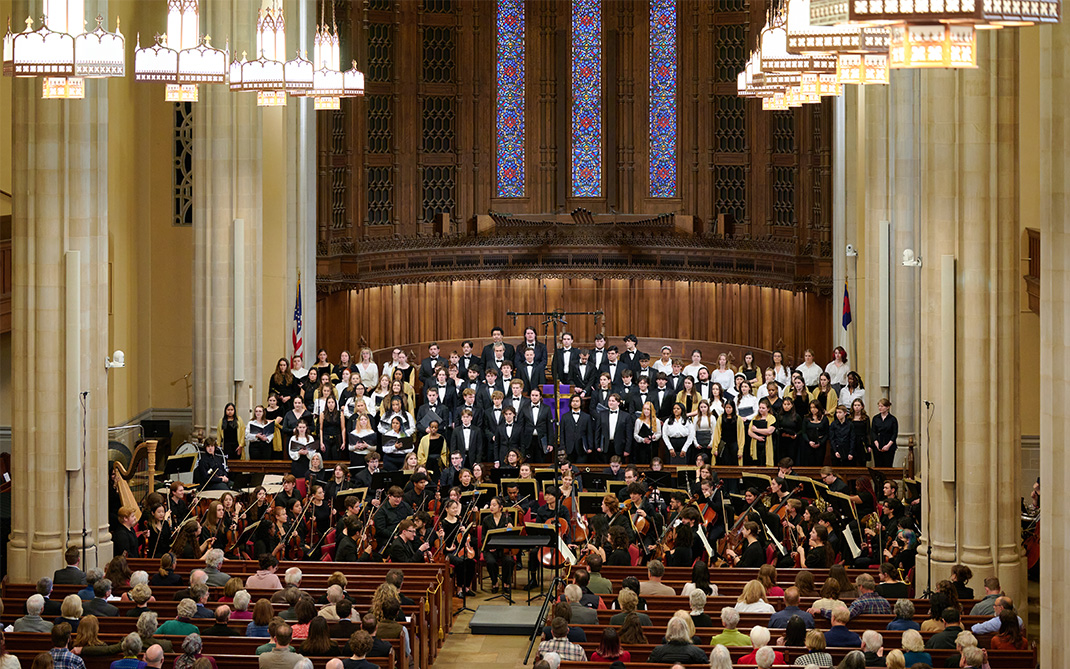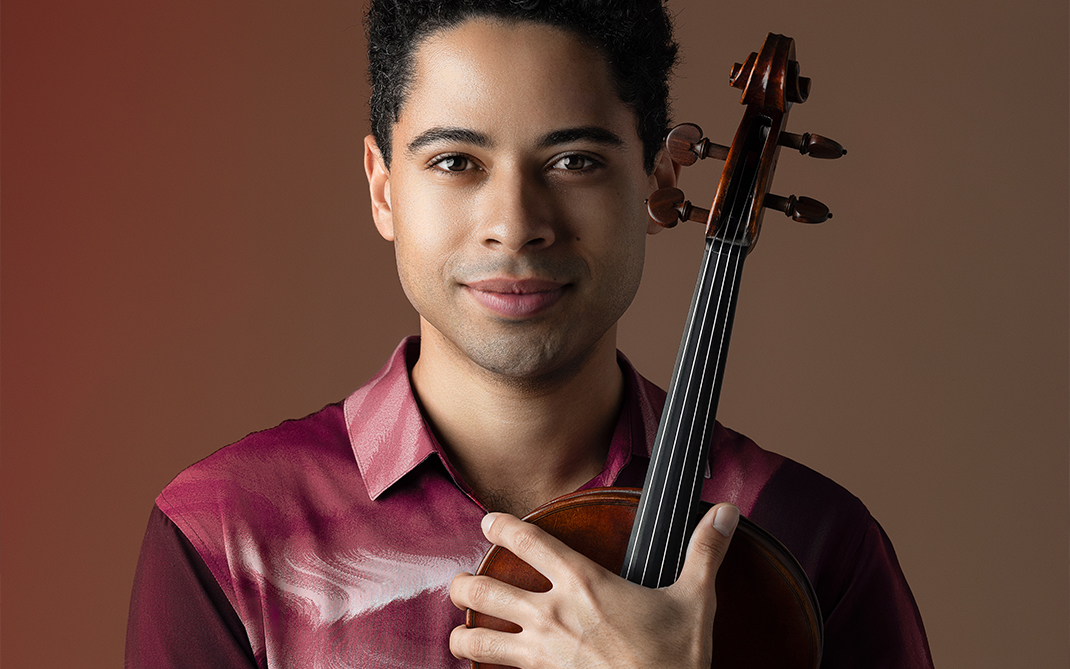The Artist as Leader: Gillian Murphy
Interview conducted by Susan Jaffe
Edited by Betsi Robinson
My students were beside themselves, and so were the faculty, when UNCSA alumna Gillian Murphy and her colleagues from American Ballet Theatre visited campus recently for a benefit performance in support of the Gillian Murphy Endowed Scholarship Fund.
During their visit, I asked Gillian to take time out of her busy schedule to talk with me for the Kenan Institute for the Arts’ series, “The Artist as Leader.” It was a rare opportunity to talk intimately with one of the greatest dancers in the world about the leadership skills she developed through her artistic training and how she is using them at ABT today.
I had the pleasure of working with Gillian when I was a ballet master at American Ballet Theatre, and I also have danced with her. So I witnessed first-hand the work ethic, the courage and the will she puts into practice every day — the kind it takes to be a dancer of the highest caliber.
Choose a question below to begin exploring the interview:
- How does your upbringing and background inform your leadership style?
- What kind of courage must artists have to create their art?
- How does your arts background influence you as a leader?
- How does the creative process translate to leadership?
- How do you inspire dancers to come with you on your artistic journey?
- How do you lead other artists?
- What is the hardest part of being a leader? And what are the greatest rewards?
- What qualities or attributes as an artist leader are the most important to have?
- What advice do you wish you had received when you were starting out as an artist leader?
- Epilogue
SJ: You have been an artist pretty much your whole life, but you also have transitioned
into leadership, not only being a leader through your performances, but by choreographing
and directing tours. So I’d like to start by asking how your upbringing and backgrounds
inform your leadership style?
GM: Growing up I was instilled with a sense of discipline and strong sense of honesty and work ethic. So those attributes instilled in me from my family have really nurtured my artistry as I’ve grown, especially moving away from home to go to the University of North Carolina School of the Arts in high school and then moving to New York at the age of 17 to join American Ballet Theatre.
SJ: I really would like to talk about that courage, because, as an artist and as a
choreographer, you’re working with a completely blank slate. You don’t know what is
going to come — it could be a disaster, it could be amazing. But the kind of courage
it takes, could you talk about that for a minute? What does it take to be able to
get on stage in front of 4,000 people and interpret something? To basically take them
on an entire journey through a character from beginning to end? What does that require
of you?
GM: It’s always a journey. Every performance feels different, particularly right before the performance. Sometimes I’m fluttered with that feeling of what’s about to happen. And other times I’m completely at ease. When I was little and I would perform, I felt completely in my element. I was shy as a child, and I would get on stage and I could do my thing, I could express myself, I could feel all these emotions and express them through the movement. I still feel that, but there’s a much greater responsibility, because as a principal dancer with American Ballet Theatre, I do need to lead the company as the title character or the female lead, to inspire the entire company to create an atmosphere, to put energy out there that speaks to the audience and tells a story, and gives the audience an exceptional experience. I think there is a lot of courage involved. For me, when I’m feeling nervous, I actually try to think — it’s not about me, I’m going to be Odette [the Swan Queen from Swan Lake] or I’m going to be Aurora [from Sleeping Beauty], and what is she feeling? And maybe for Aurora, she is nervous for her debut into society. But if I’m playing Kitri [from Don Quixote] then I have to come out there and have a blast, flirting and fanning away.
So I have to put my own personal concerns aside, because you can’t control anything. That’s the magic of live performance, that anything could happen. That’s why it’s so exciting. It really can’t even be captured on video, wholly, because the energy is so in the present moment — you have to be there and feel that exchange with the audience and with the other dancers on stage. There’s courage involved, but I try to put myself aside in a way, because it’s about something bigger.
SJ: That reminds me, I used to always try to be that pure vessel, that conduit of the character, of the story, of something larger, of those symbolic forces of humanity, so that I could move an audience in a profound way. And I think if I got in my own way — if I was nervous or self-conscious — then I cut that energy off a little bit. So yeah, it does take a tremendous amount of courage.
GM: Sometimes more pressure because the expectations are high at this point and, for me, I know what I’m capable of, and so to not accomplish that would be upsetting. But once again, when I’m feeling that way and a little overwhelmed inside by that pressure right before a show, I have to remember what it’s about. That it’s about telling a story, it’s not about my personal ego. This is such a beautiful art form to be a part of, and it’s a privilege to go out there. And any one of us who has made it to a company such as ABT has that passion and that joy to dance, to express ourselves and just to share that.
SJ: I think as a leader, too, you have to be present. Leaders have to be present because
anything can fly at you at any second. Going from artist to leader is pretty much
the same thing, because you need courage, you need presence, you need to be able to
think on your feet — no pun intended. So I do believe that training as an artist,
and performing as an artist, actually is the same training it takes to be a leader.
Even an executive leader. I want to ask you, how does your arts background influence
you as a leader?
GM: I think all the things you just said, along with the intense amount of discipline, the focus and the courage that you spoke of. And you have to have a goal and a vision. And it might not work out, but you’re directed toward that goal, and you can be spontaneous. I think we learn so many things as an artist that are really integral to being a great leader. For me, I find the biggest challenge moving forward in more leadership roles is that I spent my life expressing myself through my body, and now I need to articulate through my voice more. And I think that’s going to take practice, conversations such as this.
SJ: Well, I would have to say I think you’re very articulate!
GM: Thank you! I think that is the challenge for dancers generally, is that we have all these tools that are given to us through the incredible education of dancing — that daily focus, the grace, the spontaneity and the creativity that you learn dancing. But we also have to articulate that as leaders.
SJ: So how does the creative process translate to leadership?
GM: I think in the creative process we are working together a lot, especially in partner work, to communicate with each other — what our needs are, how to express what we’re aiming to express. Some people you have to be really diplomatic, and other people you can cut to the chase a little more. So that’s something you learn — how to manage and deal with relationships. I think another aspect of the creative process is learning how the person running rehearsal, or various directors that we work with at ABT and other guests, how they manage the room and the energy in the room. I think a few generations ago, it was more common for dancers to be divas, more temperamental, and that’s not acceptable anymore. Dancers are generally well-behaved, but we’re still very sensitive to energy in the room. So to watch a person in the front of the room, and how they’re dealing with everyone’s sensitivities, is kind of fascinating. And to learn. Some people really need to be encouraged, they’re working so hard and they just need that confidence in themselves to trust their intuition and to trust their talent, and go forth with that and create something really special. Other people might need tough love.
And that ties back to communicating with your partner. Some people, if they’re not fully engaged in what you’re trying to accomplish, you might just have to throw down a little bit and be like, ‘We have to get this together.’ I try to avoid that, but you do learn things in the creative process. I’ve learned from my own participation in it, and also, like you said, observing, seeing what works, what doesn’t work. One thing that doesn’t work for me is when people are mean-spirited, and I think that ties into the past, how the ballet world used to be. It was a little more cut-throat, and just harsher language to dancers, beating people down. I feel that now there’s a greater respect for how we devote our lives to this craft, and every dancer deserves that respect. Some people might need tough love, other people need encouragement, but it’s about how we constructively work together to inspire people, and thereby inspire the audience.
SJ: I’d love to hear from you how you lead other artists. Is it by example, by things you say to them?
GM: I try to lead by example. I feel that’s a special thing about dance — it’s an action, so you can talk about it all you want, but it’s what you see happening. So for me, leading by example is my aim. I can hopefully inspire people by how I go about rehearsing, how I try to put all of my being out there on stage in every show. And not to get wound up in complaining or getting into any sort of distractions, just staying focused on how special this job is, and how we want to continue to give as much as we can of ourselves out there.
SJ: That reminds me of when I was a ballet master, I would also teach company class, and you could really see the work ethic of each individual dancer. I think leaders like you, with your work ethic — you are leading by example, but it’s also who you are. It’s not like you’re trying to lead by example, you just do lead by example, because that’s who you are. In a way, watching you work, even in company class, is helping other dancers — younger dancers — get inspired. They say, ‘Wow, Gillian comes to class every day, she's working like crazy and she is a great star. Maybe I need to do that, too.’
SJ: As a leader, anybody can get stagnant, but to be conscious of that and to always try to find new ways to see things, is a really big attribute of leadership. What is the hardest part of being a leader? And what are the greatest rewards?
GM: I think the hardest thing about being a leader is that you’re just not going to please everyone. I feel we learn something of that from dancing, because you can dance your heart out, then read The New York Times and find out quite the opposite! It is character-building. And I think you do need the will and the vision of a true artist to be a true leader. It’s not always going to be easy. Particularly if you’re used to having great friendships, and being liked and getting along with people, and then you have to make a distinction. In a positive atmosphere, you have to go beyond that and relinquish the need to be liked at all times.
SJ: It’s funny because, as I transitioned from dancer to ballet master and then to the Dean here, what I found — and I actually didn’t find it hard, but it can be hard — is that I have to do the right thing, regardless if somebody likes it or doesn’t like it. And it may be a very hard decision, it may be the most unpopular decision, but I believe deep inside that I am doing the right thing. I think it’s the same as a dancer, that regardless if somebody’s going to like it or not, the most important thing is that what you feel deep down inside is the right thing — the right interpretation, the right way to inspire a dancer, the right decision as a leader, regardless of what people think. And it’s not so much that you’re not sensitive to it, but following the right thing causes everything else to fall away. Because if you focus on everything else, you probably wouldn’t make any decisions at all.
SJ: What qualities or attributes as an artist leader are the most important to have?
GM: Humility is important, along with a healthy sense of confidence to execute your vision. It is critical to have a vision, particularly a vision of nurturing young talent, and of nurturing younger — or older — choreographers. I think for the ballet world, that’s particularly important. We need to continue to honor the classics of ballet that speak to people of all ages in a very universal way, but also move forward so that younger audiences really feel engaged, and that the choreography is speaking to them in this present moment.
I think another important quality is a sense of humor — it can carry you a long way as an artist, and I would imagine as a director. Also because what we do in the ballet world is quite difficult and very athletic, and people are exerting themselves, I think a fun atmosphere is sometimes helpful.
SJ: I’ve learned as a dancer — and it now translates into being a Dean – if you go through a three-hour performance, it’s not all going to be perfect. So it’s the ability to deal with your imperfections and move on. Or to use your imperfections toward something even greater. Sometimes you can take that opportunity and something different comes out of it. But also giving yourself the ability to fail! Because I think the more you try to be perfect, the more perfection eludes you. I think that goes into humility and into a lot of those qualities we’ve talked about.
GM: I think another quality is just a sense of perspective. For all of us who came up through each rank of the company, you learn so much from that experience and what it feels like to be there. Maybe in the corps de ballet, you’re working so hard, performing every night, and you don’t hear anything about how great you were, no one is giving you a round of applause personally. So to remember that feeling, and how there are so many leaders within the corps de ballet that are unsung heroes. To keep that in mind as you’re being a director and leading each dancer, knowing where they are at and what they’re going through, and respecting them.
SJ: So what advice would you have liked to receive when you were starting out as an artist leader?
GM: My advice correlates with that. Most young dancers just starting out are very absorbed in their own growth and development, and that’s really a full-time job — working on your technique, developing your artistry and your humanity. But when my husband, Ethan Stiefel, became Dean of Dance at UNCSA, and also director at Royal New Zealand Ballet, it really opened up my eyes to all the people who make this art form happen. You need to know who they are and how much they’re contributing. Another part of developing as an artist is knowing that there’s such a bigger picture, that it’s not just about you. Even if you’re the title character, you’re not necessarily the star. Everybody is in this together. From the patrons, and the board, the administrative staff, the development team, the stage crew and designers, there is a lot of collaboration. So I guess my advice to young artists transitioning into leadership roles is to get to know the bigger picture. And learning how all those people contribute to making something beautiful happen onstage.
Epilogue
The true “artist as leader” is revealed in this interview. Being and leading artists requires a delicate balance of both knowing oneself and being sensitive to the processes of other artists. Thus, in any business sector — be it the arts, nonprofits, NGOs, corporate, healthcare, etc. — the successful leader knows his or her “audience,” or whom they want to lead. Without that understanding, there is a trail of failures through history to witness. Leadership takeaways from Susan’s interview with Gillian include:
- Be present. To be successful starts with being in the moment and making genuine connections with those you want to follow your lead. Blind leadership typically results in active resistance.
- Take risks. In the end, leadership is a risky business. There is no one way to success, and no amount of planning and data can guarantee a perfect outcome or please everyone. The leader has to jump in the deep end of the pool to swim. Safe choices bear benign results.
- Get results. An often self-evident goal of developing good leaders is that it helps to move a group or organization forward to better results. “Better” may be measured in lots of ways: higher attendance, stronger revenue numbers, increased productivity. It also can be measured as improved morale, higher retention and better quality.
- Transition from peer to leader. It can be awkward for both parties when someone transitions from “colleague” to “superior.” Great attention should be given to having open dialogues as well as a willingness to both give and receive feedback — for the greater good of all parties involved.
- Model behavior. Leaders can embody the values they want to set as expectations for others. Being in service to others often bears greater fruit than forcing compliance.
- Show gratitude. I recently had the opportunity to walk across a workplace campus with a senior executive. He thanked or acknowledged every groundskeeper, manager, colleague and cashier we passed. There is great power in letting people know they are seen and appreciated.
— Rob Kramer
